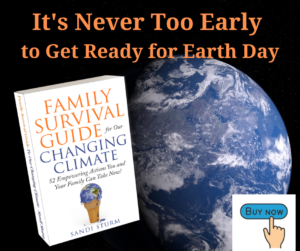Every child on this planet has the right to live in a healthy environment. Societies prosper when children are given every opportunity in life. But that is not always the reality and becomes an environmental justice issue.
Millions of children, by no other reason than the circumstances of where they were born or their gender, are subjected to toxic environments and extreme poverty.
Access to clean water and nutritious food is limited to those living in areas of poverty and social injustice. One of every six children live on less than $1.90 per day. Nearly 52 million children are expected to die before turning five during the years between 2019 and 2030 if things don’t change.
Immense injustices violate the rights of the world’s children and promote intergenerational cycles of poverty. These cycles threaten stable societies and national security.
What is causing this global problem?
Overall Problems of Environmental Justice and Children’s Rights
Worldwide pollution has been a topic of discussion long before headlines about the effects of climate change.
Air pollution kills millions of people each year. A 2021 study from Harvard School of Public Health found that, worldwide, one in five deaths in 2018 were caused by fossil fuel pollution. That is equivalent to the population of New York City. Thousands of those deaths were children under the age of five who suffered from respiratory infections.
Children living at poverty levels or below do not have adequate access to healthcare which is exacerbated by the fact that people in poor neighborhoods breathe more hazardous particles than those living in affluent areas.
There is a widening racial and economic gap in the U.S. when looking at the affects of air pollution. Communities of color living in high poverty areas and low education have greater health risks. Their neighborhoods are often found next to busy highways, rail yards, power plants, or other industrial areas.
If new air quality health standards were imposed around the world, over 50 countries would not be able to meet those standards.
The effects of climate change are affecting those living below or at poverty level much more than those on the other end of the economic gap. Areas such as sub-Saharan nations in Africa who already struggle with food scarcity are now forced to be climate refugees because of extensive drought. These and other marginalized and vulnerable populations are at the most at risk from climate related changes.
Children living in these circumstances typically have no voice and many of them do not understand the severity of the situation. Yet, they are the most vulnerable.
Possible Solutions to Fighting for Environmental Justice and Children’s Rights
Education at all levels is the first step in combating environmental injustice. Every one of us living in industrialized countries are contributing to the problem whether you know it or not.
For example, used-up American batteries are shipped to illegal waste dumps in Mexico, where regulations are less strict. The lead leaking from these batteries is linked to high rates of anencephaly – babies born without brains.
Change begins by knowing what health hazards are present in your community and the populations that are directly affected. This goes from the chemicals sprayed on farmland in rural areas, to various gases spewing out of smokestacks in urban areas.
Once you understand the issues, find social justice advocates in your community. Support them the best way you can and help amplify their voice.
With this new knowledge and voice, it is now possible to hold your local public officials accountable. Issues will appear during land use permits, policy design and enforcement. Transparency is key. When possible, include children in the decision-making process.
Beyond public officials we also have power in how we spend our dollars. Know the environmental practices of corporations, banks, and industry and use your power to boycott when necessary. For example, does your bank fund fossil fuel projects in poverty-stricken countries?
Remember, we are also the voice of our children when they are too young to participate.
Global Initiatives to Protect Children’s Rights
The United Nations General Assembly adopted the Declaration of the Rights of the Child in 1959 and soon after incorporated UNICEF (United Nations Children’s Fund). UNICEF’s work earned them a Nobel Peace Prize in 1965 and their work continues today in over 190 countries and territories. Their focus is to reach those most vulnerable and excluded children – everywhere.
UNICEF follows the Convention on the Rights of the Child (CRC, 1989) which changed the way children are treated. They are no longer passive objects that receive assistance. Instead, they are seen as human beings with rights to health, education, and protection. Everything they need to remove barriers to opportunity to raise out of poverty.
The four principles include:
- Non-discrimination
- Devotion to the best interests of the child
- The right to life, survival, and development
- And respect for the views of the child.
The CRC is ratified by 195 countries which means it is the most ratified human rights treaty in the world. The United States and Somalia have not ratified.
There is more work to be done.
Let us know what topics you are interested in learning more about.









